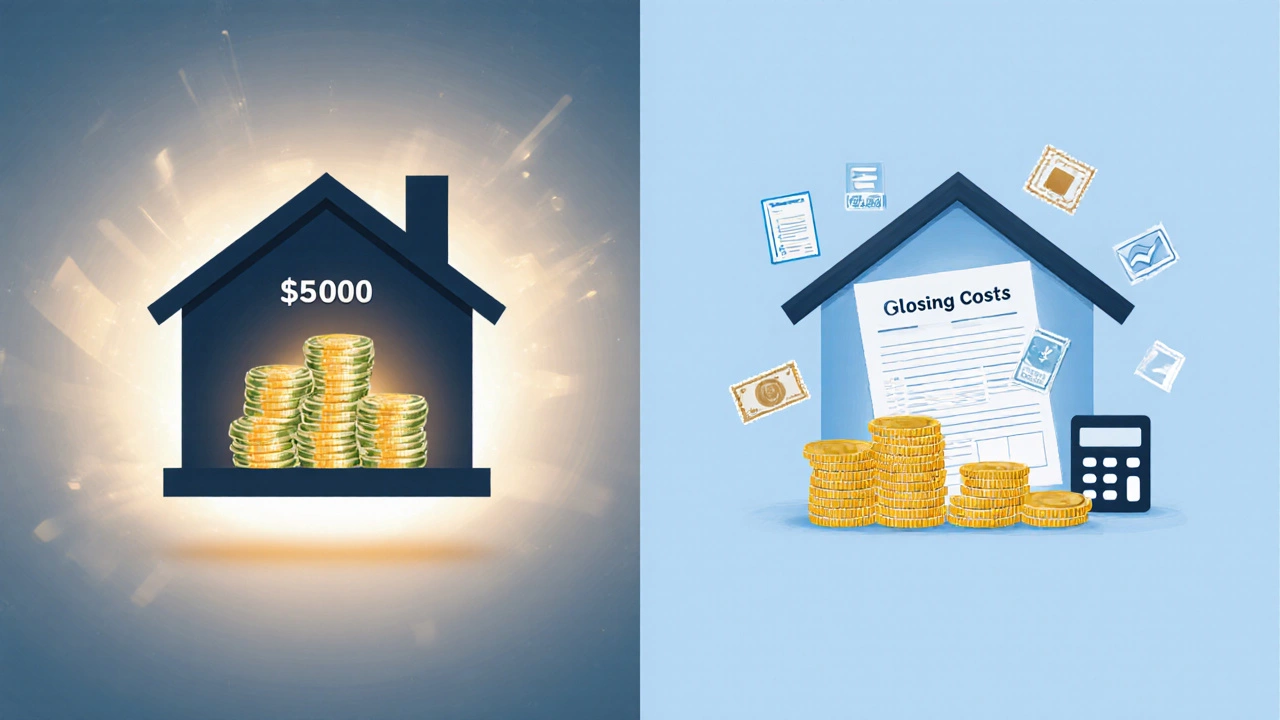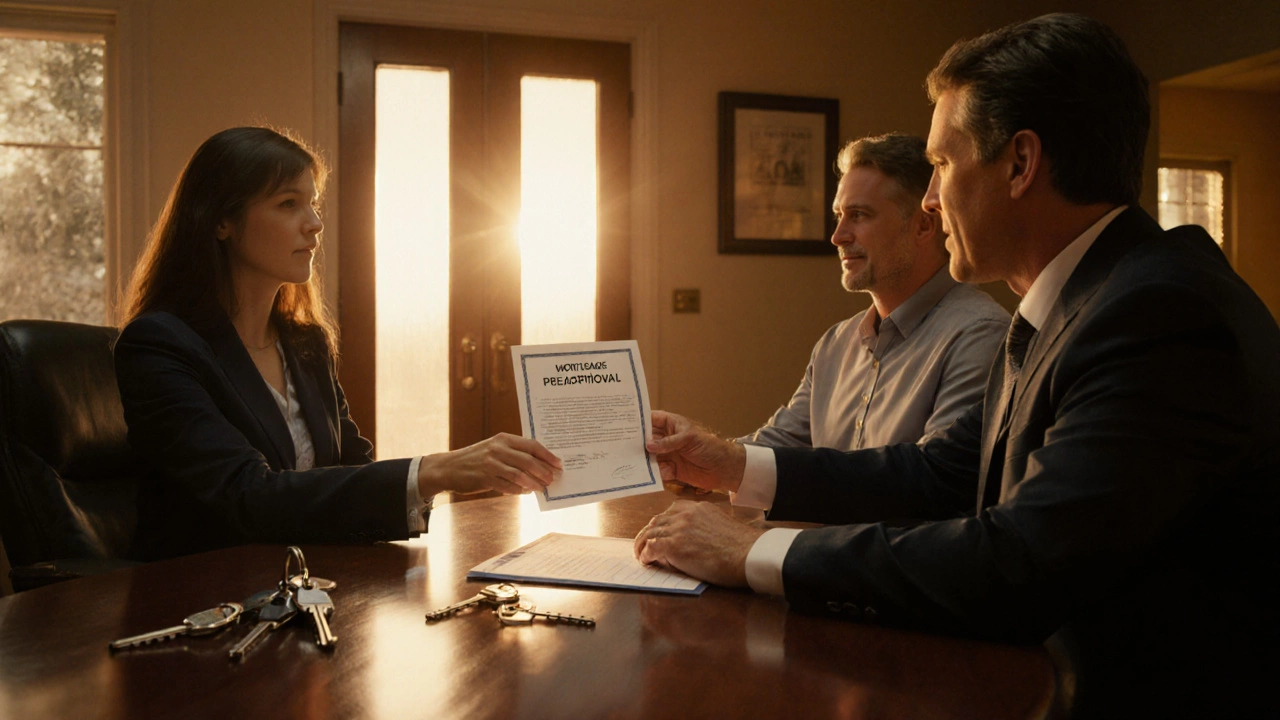20% Down Payment Calculator
Results
| Down Payment % | Down Payment Amount | Loan Amount | Typical LTV | Monthly Payment (Est.) | PMI Needed? |
|---|---|---|---|---|---|
| 5% | $15,000 | $285,000 | 95% | ~$1,620 | Yes |
| 10% | $30,000 | $270,000 | 90% | ~$1,540 | Yes |
| 20% | $60,000 | $240,000 | 80% | ~$1,360 | No |
Quick Takeaways
- The 20% down payment on a $300,000 house is $60,000.
- Paying 20% reduces your loan‑to‑value (LTV) to 80%, often unlocking better interest rates.
- Include closing costs (2‑5% of purchase price) in your budgeting plan.
- Use a mortgage calculator to see how a larger down payment lowers monthly payments.
- First‑time buyers can tap government schemes, but many still aim for 20% to avoid private mortgage insurance.
What is a 20% down payment?
When you buy a house, the 20% down payment is the portion of the purchase price you pay upfront, usually in cash or cash‑equivalent savings. For a $300,000 property, that means you need $60,000 before the lender releases any loan funds.
Why does 20% matter?
Most lenders look at the Loan‑to‑Value (LTV) ratio - the loan amount divided by the appraised value. A 20% down payment translates to an 80% LTV, which is often the threshold for:
- Lower interest rates, because the loan is less risky for the bank.
- Avoiding private mortgage insurance (PMI), which can add $50‑$150 to your monthly bill.
- More favorable loan terms, such as lower fees or flexible repayment options.

Step‑by‑step: Calculating the 20% down payment on a 0,000 house
- Identify the purchase price. In this case, it’s $300,000.
- Multiply the price by 20% (or 0.20).
$300,000 × 0.20 = $60,000. - Confirm you have or can accumulate $60,000 for the down payment.
- Estimate additional closing costs (see section below) and add them to the $60,000 to get a total cash‑needed figure.
That’s it - the math is simple, but the surrounding budgeting can get tricky.
Budgeting for the full cash requirement
Besides the $60,000 down payment, you’ll likely face closing costs. These typically range from 2% to 5% of the purchase price, covering fees such as:
- Legal conveyancing
- Title search and registration
- Valuation and inspection fees
- Government taxes (e.g., stamp duty in NZ)
For a $300,000 home, expect $6,000‑$15,000 in closing costs. Adding that to the down payment gives a total cash need of $66,000‑$75,000.
Using a mortgage calculator to see the impact
Plug the numbers into a mortgage calculator to understand monthly repayments. Example assumptions:
- Loan amount: $240,000 (purchase price minus $60,000 down payment)
- Interest rate: 5.5% (typical 30‑year fixed rate for 80% LTV)
- Term: 30 years
The calculator shows a principal & interest payment of about $1,360 per month, plus property taxes and insurance. If you could only afford a 10% down payment ($30,000), the loan would be $270,000, raising the monthly payment to roughly $1,540 and likely adding PMI.
Comparison of common down‑payment levels
| Down‑payment % | Down‑payment amount | Loan amount | Typical LTV | Estimated monthly P&I | PMI needed? |
|---|---|---|---|---|---|
| 5% | $15,000 | $285,000 | 95% | ~$1,620 | Yes |
| 10% | $30,000 | $270,000 | 90% | ~$1,540 | Yes |
| 20% | $60,000 | $240,000 | 80% | ~$1,360 | No |
As the table shows, moving from a 5% to a 20% down payment can shave more than $250 off your monthly payment and eliminate PMI.

Key factors that influence how much you need to save
Beyond the raw 20% figure, consider these variables:
- Credit score - a higher score often earns lower rates, making a smaller down payment more affordable.
- Interest rate environment - when rates climb, the cost of borrowing rises, so a larger down payment becomes more valuable.
- Property taxes and home insurance - these recurring costs affect the total monthly outlay.
- Availability of government assistance (e.g., KiwiSaver First‑Home Withdrawal in NZ) - can boost your savings pool.
Common pitfalls and pro tips
Even seasoned buyers slip up. Here’s what to watch out for:
- Under‑estimating closing costs. Always budget the high end of the 5% range.
- Relying on a single savings source. Combine salary, bonuses, tax refunds, and gifting from family when possible.
- Ignoring liquidity. Keep an emergency fund equal to at least three months of total housing costs.
- Skipping the mortgage pre‑approval. Pre‑approval locks in a rate and shows sellers you’re serious.
- Neglecting future income changes. Factor in potential salary growth or reductions before locking in a long‑term loan.
Next steps for prospective buyers
- Run the numbers: Use an online calculator to confirm the $60,000 down payment fits your budget.
- Gather documentation: recent payslips, tax returns, and bank statements.
- Get pre‑approval: Approach a lender with your calculations and ask for a rate quote based on an 80% LTV.
- Plan for closing: Request a detailed estimate of all fees from your solicitor or conveyancer.
- Save strategically: Set up automatic transfers to a high‑interest savings account and track progress toward the $60,000 goal.
Following this roadmap puts you in a strong position to close on a $300,000 property with confidence.
Frequently Asked Questions
Do I really need 20% down to buy a house?
No, many lenders will accept 5‑10% down, but a 20% down payment avoids private mortgage insurance and usually secures a lower interest rate, saving you money over the life of the loan.
How much will closing costs add to my $60,000 down payment?
Expect 2‑5% of the purchase price, so for a $300,000 home that’s roughly $6,000‑$15,000 on top of the down payment.
Will a 20% down payment lower my monthly mortgage payment?
Yes. A larger down payment reduces the loan amount, which lowers principal‑and‑interest payments and often eliminates PMI, resulting in a noticeable monthly saving.
Can I use KiwiSaver to cover the 20% down payment?
If you’re a first‑time buyer in NewZealand, you can withdraw up to $5,000 per year (up to $20,000 total) plus the government's $5,000 kick‑start contribution. It can form part of your $60,000 but not the whole amount.
What’s the best way to estimate my total cash needed?
Add the 20% down payment, an estimate of 3‑5% for closing costs, and a buffer for moving expenses and emergency savings. For a $300,000 home, budgeting $70,000‑$80,000 covers most scenarios.
